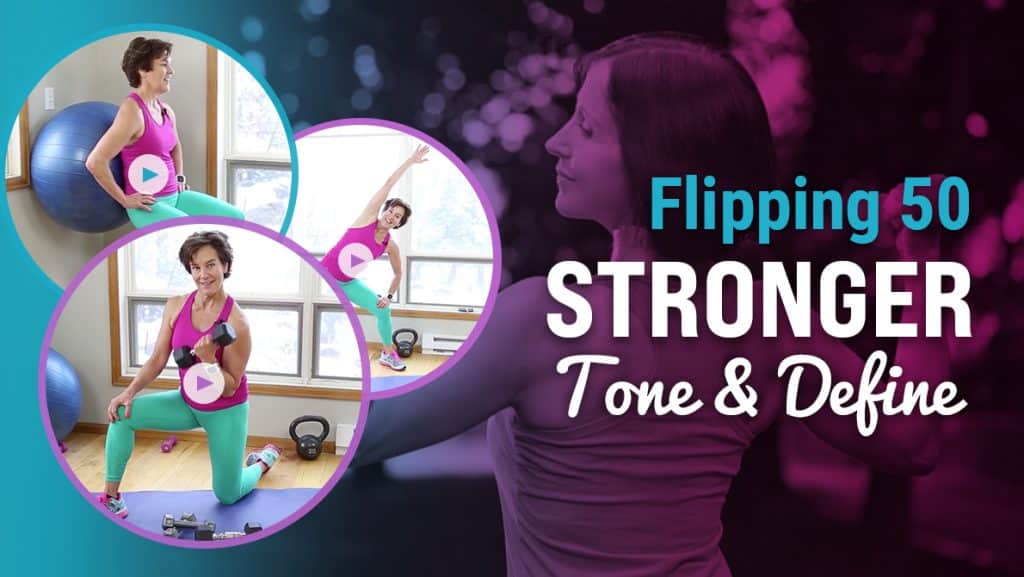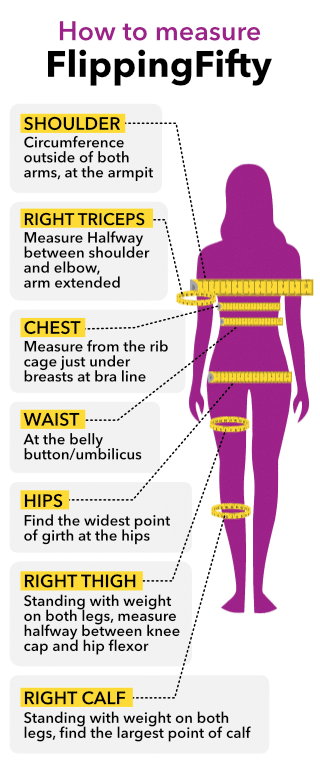How can you avoid muscle loss after menopause? A 2020 study proved Hormone Replacement Therapy (HRT) could prevent or slow sarcopenia (muscle loss) for women in post-menopause. This post addresses when and what to consider regarding HRT as a supplement to exercise, nutrition, & lifestyle changes for menopause.
Here’s the spoiler alert if you want the bottom line: Long term use of HRT (defined as 13 or more months) has a positive effect on maintenance of muscle in post-menopause.
Over 4000 post-menopausal women were subjects in a study conducted over a three-year period. Prevalence of sarcopenia (significant muscle loss) was lower in those with prolonged HRT compared to those with short use or no use.
Wondering how you’d know if you have sarcopenia? and or how to prevent muscle loss after menopause? Read on.
What does sarcopenia look like?
At first it looks like a slower metabolism. Especially during late stages of perimenopause/early post menopause, the clothes you love may not fit any more. You’ve begun to size up one when ordering clothes, even the yoga pants. But that’s only the beginning.
You see yourself in pictures and wonder about the increased fat and lack of muscle tone.
You begin to fatigue sooner when exercising. You’re more sensitive to carbohydrates, meaning you’re eating (and drinking the same) but gaining weight. You’re not yet insulin resistant, but you’re heading that way. Your fasting glucose numbers are anywhere from creeping to dramatically elevated. “Pre-diabetic” has never come up before at your physical, and it might now. That’s all because muscles help blood sugar regulation.
Yours have left the building.
Definition of Sarcopenia
Sarcopenia is defined as a loss of both skeletal muscle mass and strength and is believed to mostly affect older individuals. Muscle mass decreases with age*, with a 0.5% to 1.0% reduction in muscle mass per year after 70 years of age. Losses will happen if* you aren’t
- lifting weights properly (weight lifting is not all targeting muscle loss prevention)
- eating protein in ways that offset it (this again gets specific, if you think, “I eat enough protein” but don’t truly know and want to age optimally, find out)
Sarcopenia is present in about 25-50% of men and women over 65 years but may occur earlier in life. In fact, those muscle losses start at 30 and are measurable by 35. To avoid muscle loss after menopause you want to be as conscious about your strength training and protein in take before menopause, or be sure you’re not just “exercising” and calling it good after.
It’s a Disease: Which Means It’s Preventable
Sarcopenia is now considered a muscle-disease-causing adverse health outcomes due to low muscle mass and strength. Sarcopenia increases the risks of falls, fractures, disability, and functional impairments, as well as mortality. In addition, individuals with sarcopenia have higher insulin resistance and are at increased risk of diabetes and cardiovascular disease than nonsarcopenic individuals. Why? Muscle (and exercise) supports stable blood sugar, as mentioned previously.
Because women have a longer lifespan than men, women are more likely to experience the negative muscular changes associated with aging.
Additionally, because women currently in their 50s, but especially their 60s, and 70s were not necessarily socialized to lift weights they also weren’t lifting weights with intensity in their 30s and 40s to prevent the cumulative effects of muscle loss with aging.
But it’s never too late.
Why Muscle Loss Occurs and What Accelerates It
Age-related reductions in anabolic* hormones such as testosterone, growth hormone, and insulin-like growth factor-1 have been shown to be associated with muscle loss. Sarcopenia is highly prevalent in postmenopausal women and it’s a decline of estrogen that contributes to muscle losses.
*anabolic = muscle building and repairing
In the study previously mentioned, hormone therapy including estrogen was directly related to higher muscle mass and reduced incidence of sarcopenia. In addition, the current study showed 13 months or more of HRT significantly supported increased muscle mass.
During the pandemic, actually just prior to it, I’d begun HRT (I’ve posted about this elsewhere). In 8 weeks I lost 5 lbs of fat weight, and increased my lean muscle, for a loss of 5% fat. This was on an at-home twice weekly 20-minute interval workout and twice weekly strength training program supplemented by low to moderate level walking.
Less than 13 Months?
If a hormone imbalance is cause for your lean loss and fat gain, you may see (and feel) differences in much less than a year (as I did). And it may be as related to trading over exercise for a cortisol-reducing training program better matched to your needs. This requires the application of hormone balancing exercise.
However, no two women in menopause have exactly the same needs. When you learn how to adapt to signs and symptoms of menopause, alone or with a coach, you have better control.
Are you a fitness trainer or health coach? For information on the Flipping 50 Fitness Specialist – the most comprehensive training for coaches working with women in menopause – you can click here.
Making exercise (and potentially nutrition) changes alone may be enough. If you’re not using HRT, but also not exercising with a personal plan, and simply following a “program” designed for someone unlike you, not for you, you may see and feel dramatic benefit by making these easy changes first.
Are You Sarcopenic? Avoid Muscle Loss After Menopause By Knowing
How do you know? Unlike the standard of a bone density scan for osteoporosis, sarcopenia is currently a little less commonly associated with a standard “test.” In fact, I have had only one female client in 37 years return from her physician and say anything related to her muscle mass and strength. As related as it is to disability, falls and fractures – to a greater extent than bone density – it still is not a discussion doctors* routinely have. So, to answer this question, below you’ll find a simple equation you can do for yourself.
Researchers can predict in tests designed for adults >65 years that include a walking speed/power test and a grip strength test, low muscle strength. If walking speed is less than about 2.2 mph in a much shorter walking speed test, grip strength is next evaluated. Though you can’t easily assess your grip strength without a tool, you probably know your walking speed from your watch, or your treadmill, or a simple measure of a course and the time it takes you.
What About Women in Midlife?
You may be asking, what about women between 50 and 65 who can easily walk 2.2 mph yet may be on the way to significant muscle loss? How could you stop it by knowing your status now instead of waiting to test until it’s too late?
You can calculate (based on knowledge of body fat) your own sarcopenia risk based on muscle mass. As a Medical Exercise Specialist I would want to know both muscle mass and muscle strength & performance. The two together provide a more comprehensive definition. Without a visit to an exercise lab, track your walking speed and do the calculation below.
Sample calculation for a woman 130 pounds and 25% body fat
To complete this calculation you need to know your fat percent.(Not BMI)
Fat percentage is 25%
Know your weight: 130 lbs
Then, muscle mass = 75% of 130 (weight in pounds)
Convert to kgs.
130 lbs = 59 kgs
Determine weight of muscle in kg.
59 kg x .75(percent lean/muscle) = 44.25 kg
Convert height to meters.
5’4” = 1.62 meters
Calculate height squared.
Height squared= 2.62 meters
Complete the calculation and compare to clinical definition.
44.25 kg/2.62 m squared = 16.88
(For men, <7.23 kg/m2 and in women at <5.67 kg/m2 would be defined as sarcopenic.
How is your muscle you doing?
[If you have or have not had a conversation with your doctor about your muscle mass but have had conversations about your bone, I would love to hear from you in the comments.]
Is HRT the answer to muscle loss after menopause? It might be but consider this your checklist for the steps you want to take yourself. No pill, cream, or shot does all the heavy lifting.
Checklist to avoid muscle loss after menopause:
- Start lifting weights to the point of muscular fatigue 2x a week with 72 hours between
- Eat high quality protein to recover adequately daily 30+ gms 3 meals per day (at minimum 2) and additionally around resistance exercise if possible.
- Assess & prioritize your sleep quality and quantity.
- If you’re still experiencing frailty, weakness, and not progressing, HRT may support your needs, particularly if you are 60 or younger and have reached menopause within the last 10 years.
Need a Muscle Loss Prevention Plan? Two Resources:
Flipping 50 STRONGER
A few times a year I open a 12-week strength training program to the public. For Jan 1-March 31 enrollment is open for Tone & Define. Perfect for starting, restarting, or for women who – like me- experienced and regular strength trainer who periodically needs to change my programming to see results. Register til Dec 31, 2020. Seeing this later? You’ll be invited to the notifications list.
Flipping 50 Membership “Cafe”
The first and only fitness membership build for women in menopause. Every exercise workout, program, master class, expert interview based on research featuring women in menopause. (not mice, men, or young women). Get all 5 12-week STRONGER programs inside (value $1000) and so much more including 2x/month live coaching opportunities with Debra, and a community of women just like you. Open twice a year – closes Jan 6, 2021.
References:
Kim, Sung-Woo MD1; Kim, Rebecca MD2 The association between hormone therapy and sarcopenia in postmenopausal women: the Korea National Health and Nutrition Examination Survey, 2008-2011, Menopause: May 2020 – Volume 27 – Issue 5 – p 506-511 doi: 10.1097/GME.0000000000001509
Santilli V, Bernetti A, Mangone M, Paoloni M. Clinical definition of sarcopenia. M. 2014;11(3):177-180.









